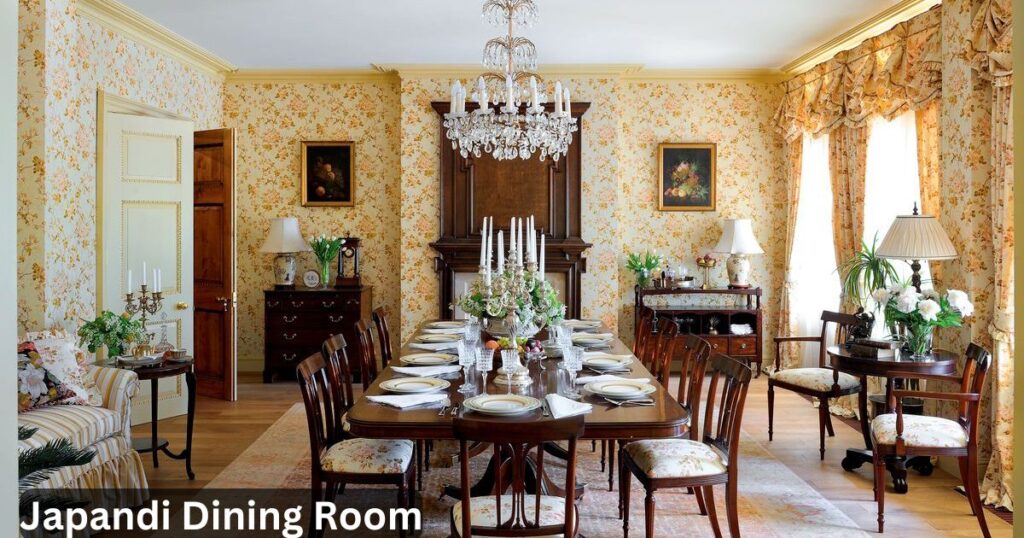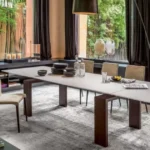Japandi style, a harmonious blend of Japanese and Scandinavian design principles, has gained significant popularity in recent years. This unique aesthetic creates serene and inviting dining spaces that balance minimalism with comfort. In this comprehensive guide, we’ll explore the essence of Japandi dining rooms and delve into the latest trends that can help you achieve this sought-after look in your home.
Understanding Japandi Style
Japandi design marries the best elements of Japanese and Scandinavian aesthetics:
- Japanese influence: Known for its minimalism, natural materials, and emphasis on craftsmanship.
- Scandinavian contribution: Brings in functionality, clean lines, and a cozy atmosphere.
The result is a design philosophy that values simplicity, natural elements, and a sense of tranquility. Japandi dining rooms embody these principles, creating spaces that are both visually appealing and deeply comfortable.
Key Elements of a Japandi Dining Room
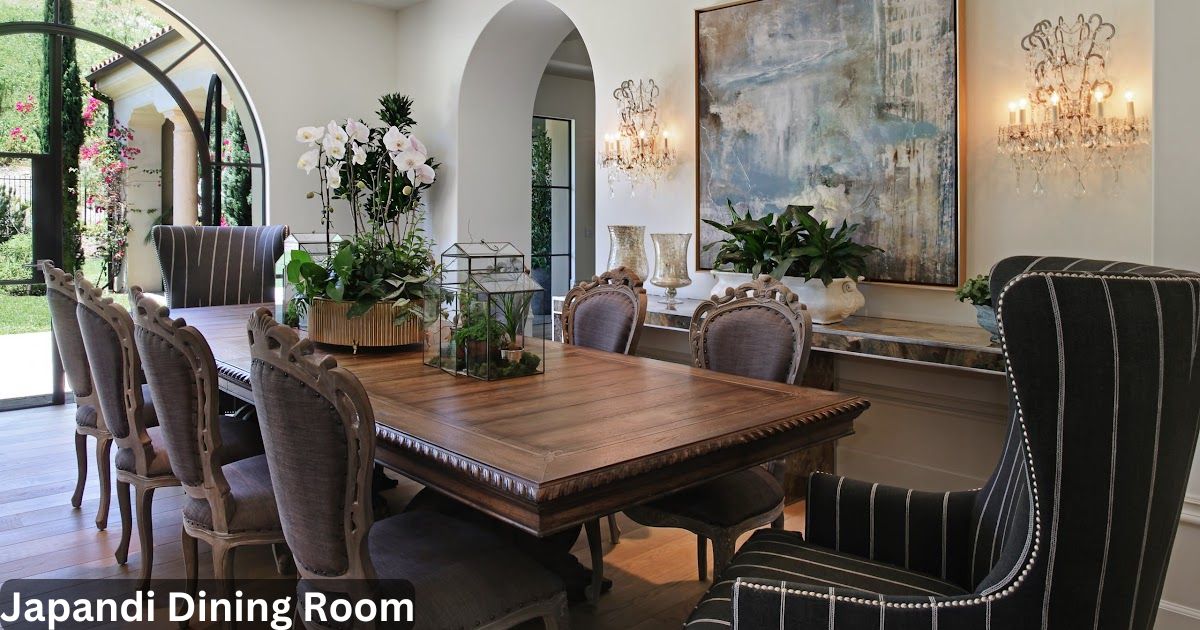
- Natural Materials: Wood is the star player in Japandi design. Opt for light to medium-toned woods like oak, ash, or bamboo for furniture and flooring.
- Neutral Color Palette: Embrace soft, muted colors. Think warm whites, beiges, soft grays, and gentle earth tones. These create a calm backdrop for your dining space.
- Clean Lines: Furniture and decor should feature simple, streamlined shapes without excessive ornamentation.
- Minimalist Approach: Keep clutter to a minimum. Each item should have a purpose or bring beauty to the space.
- Thoughtful Lighting: Incorporate soft, warm lighting through pendant lights, table lamps, or even traditional Japanese paper lanterns.
- Greenery: Add life to your dining room with carefully chosen plants. Bonsai trees or simple bamboo stalks can provide a perfect touch of nature.
Japandi Dining Room Trends
Now, let’s explore the latest trends in Japandi dining room design, offering you inspiration and practical ideas to incorporate this style into your home.
1. Warm Color Palette
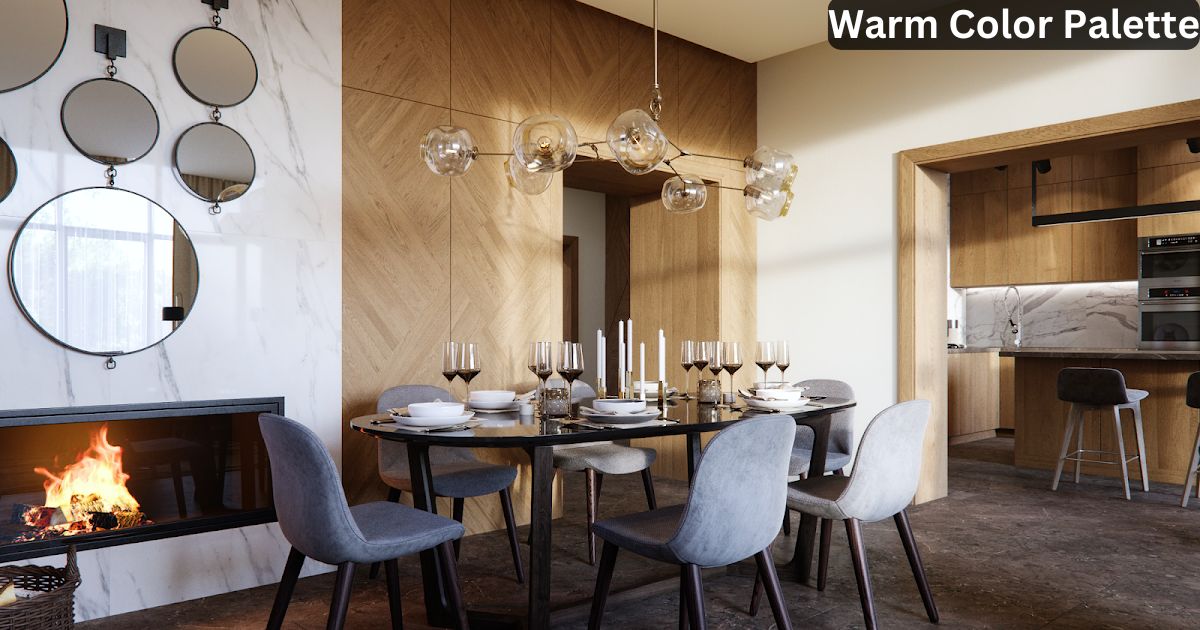
While Japandi style is often associated with cool, neutral tones, there’s a growing trend towards incorporating warmer hues. This shift adds depth and coziness to dining spaces without compromising the overall minimalist aesthetic.
How to incorporate:
- Use warm-toned woods for your dining table and chairs
- Paint an accent wall in a soft terracotta or muted rust color
- Incorporate textiles like table runners or seat cushions in warm beige or oatmeal tones
Why it works: Warm colors create a welcoming atmosphere, perfect for gathering and sharing meals. They also complement the natural materials commonly used in Japandi design.
2. Globe Lantern Lighting
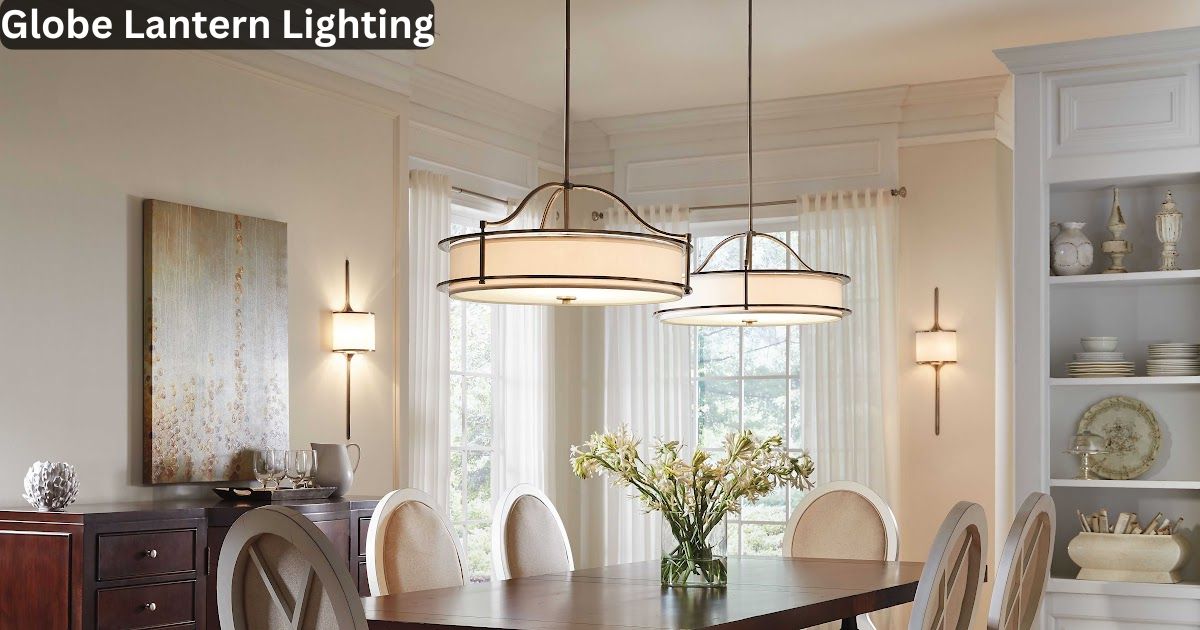
Lighting plays a crucial role in setting the mood of a Japandi dining room. Globe lanterns have become increasingly popular, offering a perfect blend of Japanese-inspired design and Scandinavian simplicity.
Key features:
- Soft, diffused light that creates a calm ambiance
- Simple spherical shapes that complement clean lines of Japandi furniture
- Often made from paper, glass, or metal with a matte finish
Styling tips:
- Hang a cluster of globe lanterns at varying heights above your dining table
- Choose lanterns in neutral colors like white, beige, or light gray
- Mix sizes for visual interest while maintaining a cohesive look
3. Dark Accents
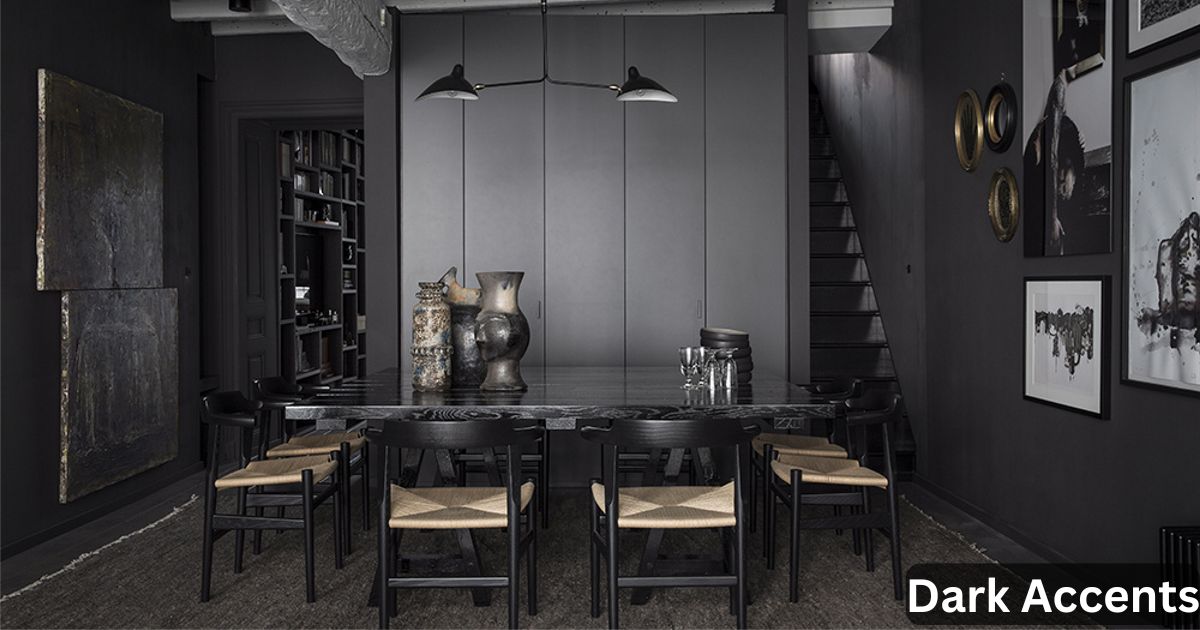
While Japandi style typically leans towards lighter tones, introducing dark accents can add depth and sophistication to your dining room.
Ways to incorporate dark accents:
- Choose dining chairs with dark metal legs
- Add a black or charcoal gray sideboard or console table
- Use dark picture frames for wall art
- Incorporate black ceramic vases or bowls as table centerpieces
Balance is key: Use dark elements sparingly to maintain the overall light and airy feel of Japandi design. Think of these darker pieces as grounding elements in your space.
You can also read about: Steampunk Interior Design
4. Wood Slat Walls
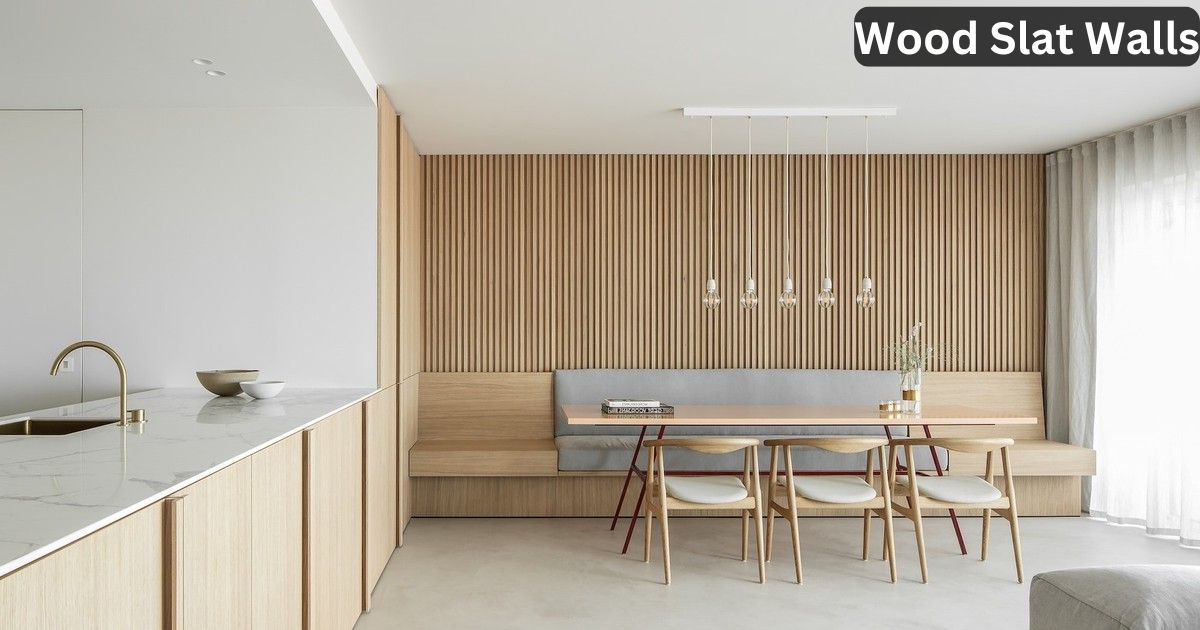
Wood slat walls have become a standout feature in many Japandi-inspired interiors, including dining rooms. They add texture, warmth, and a connection to nature.
Benefits of wood slat walls:
- Create visual interest without overwhelming the space
- Improve room acoustics
- Offer a seamless blend of Japanese architectural elements and Scandinavian wood craftsmanship
Design options:
- Vertical slats for a sense of height
- Horizontal slats for a more contemporary look
- Mix different wood tones for added dimension
Consider using wood slats as an accent wall behind your dining table or to define the dining area in an open-plan space.
5. Fluted Wood Details
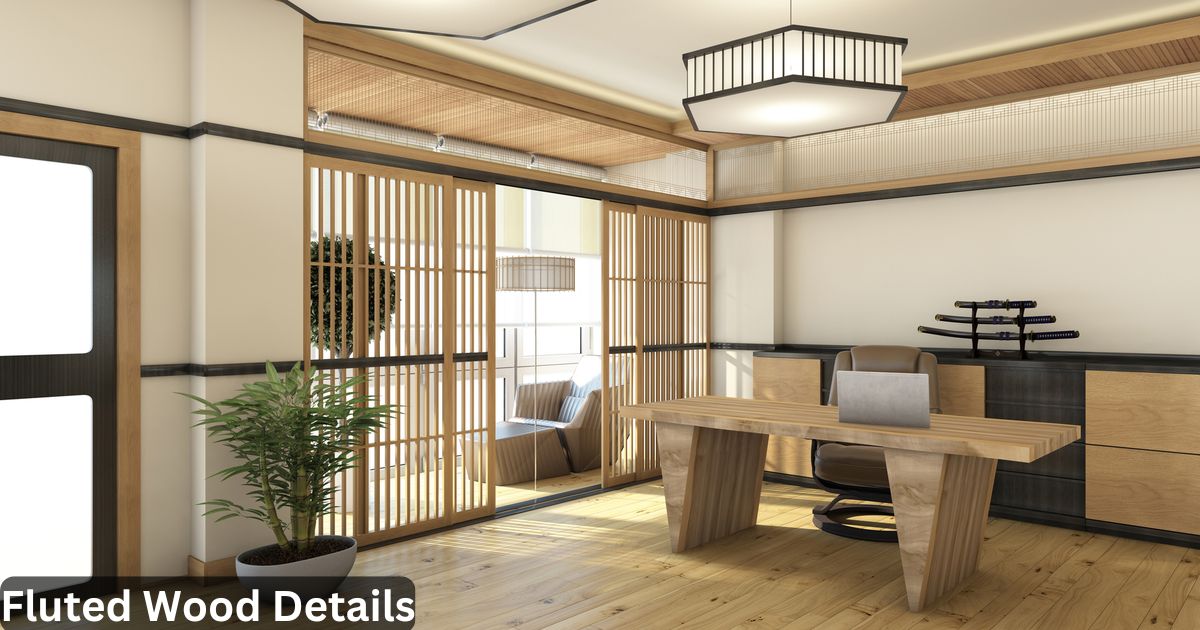
Fluted wood, characterized by vertical grooves, adds a touch of elegance and visual interest to Japandi dining rooms. This trend pays homage to both Japanese and Danish woodworking traditions.
Where to use fluted wood:
- Dining table bases
- Cabinet fronts
- Room dividers or screens
- Decorative wall panels
The subtle play of light and shadow on fluted surfaces brings depth to the space while maintaining the clean lines essential to Japandi style.
6. Slanted Ceilings
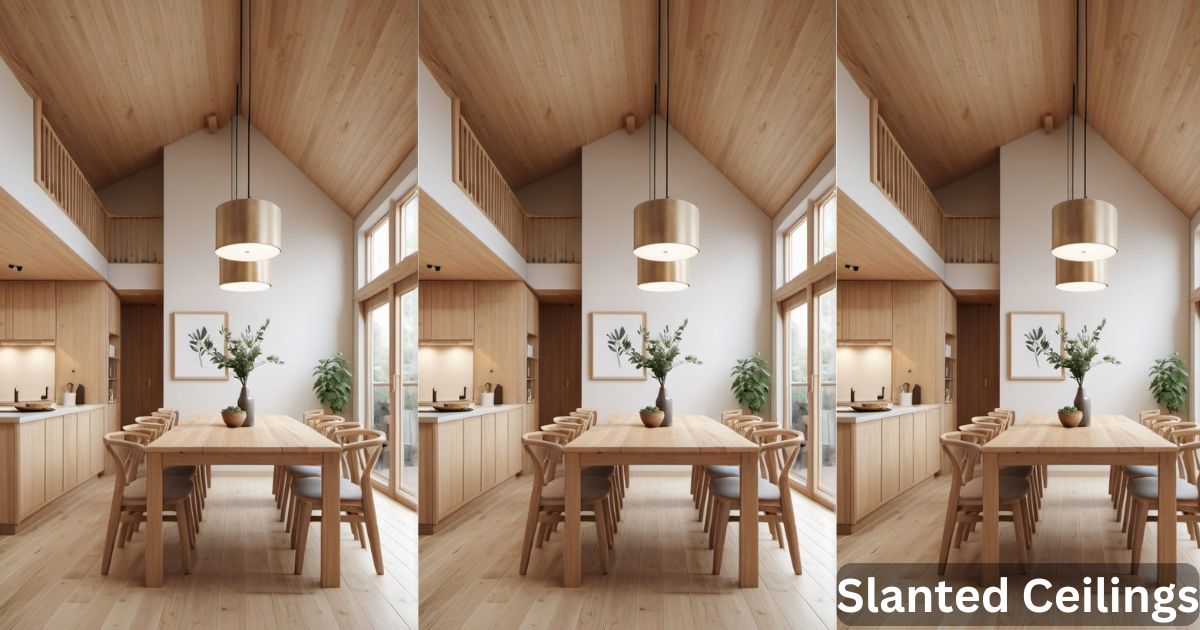
While not a feature you can easily add to an existing room, slanted or vaulted ceilings are becoming increasingly desirable in Japandi-inspired spaces. They create a sense of openness and add architectural interest.
Advantages of slanted ceilings:
- Increase the perception of space
- Allow for larger windows, bringing in more natural light
- Create opportunities for unique lighting arrangements
If you’re lucky enough to have a slanted ceiling, emphasize it with exposed wooden beams or by painting it in a light, warm color to enhance the airy feel of your dining room.
7. Curved Back Chairs
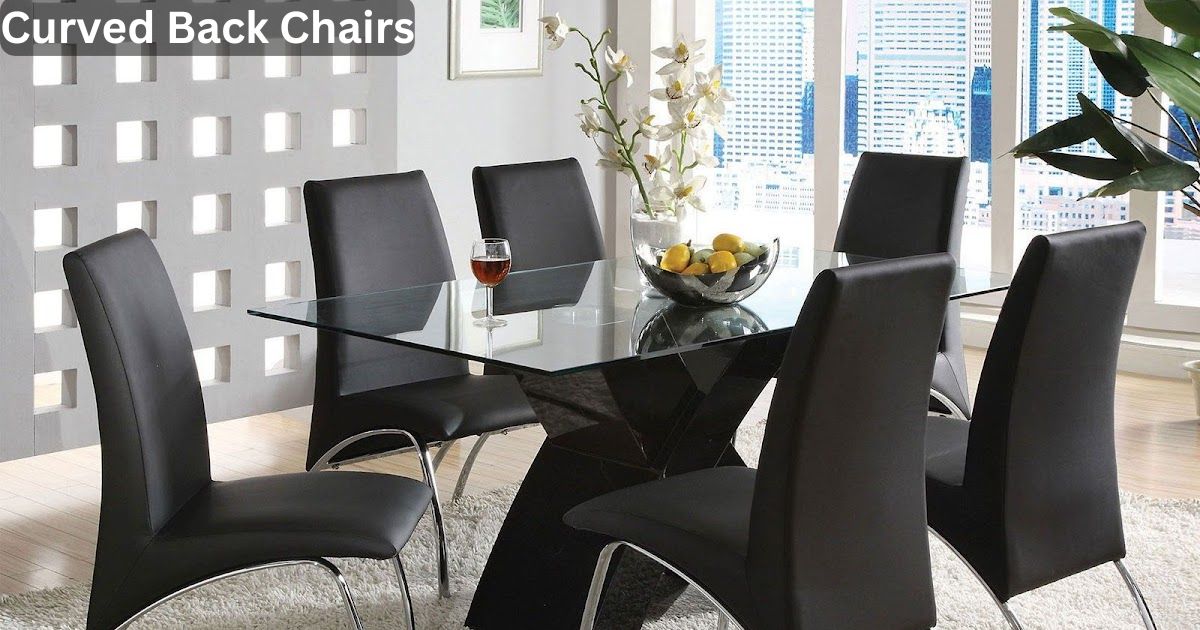
Introducing gentle curves through your dining chairs softens the overall look of a Japandi dining room, creating a more inviting and comfortable space.
Chair design elements to look for:
- Subtly curved backrests
- Organic, flowing lines
- Natural materials like bent wood or woven rattan
Pair curved chairs with a simple, rectangular dining table to balance straight lines with softer shapes.
8. Handcrafted Ceramics
Ceramics play a vital role in Japandi dining rooms, reflecting the style’s appreciation for craftsmanship and natural materials.
Types of ceramics to incorporate:
- Stoneware dinner plates and bowls in earthy tones
- Handmade vases with organic shapes
- Textured ceramic planters for small indoor plants
Look for pieces with imperfections or irregular shapes to add character and authenticity to your dining space.
9. Statement Artwork
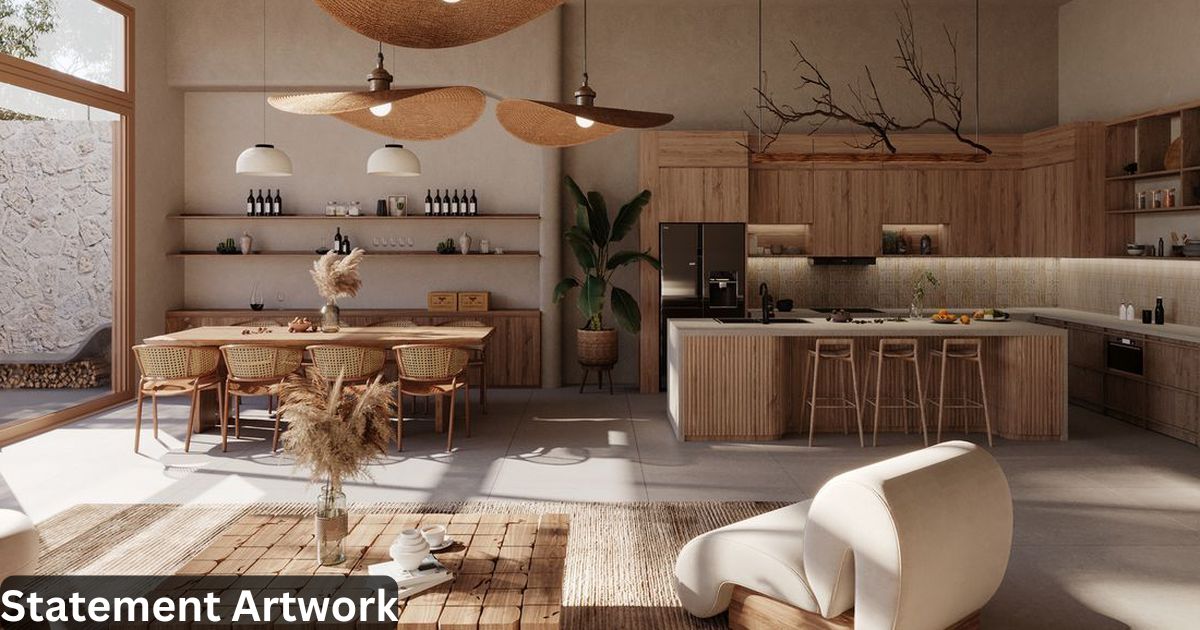
While Japandi style emphasizes minimalism, a carefully chosen piece of statement art can elevate your dining room design.
Artwork considerations:
- Choose pieces with simple compositions and muted colors
- Consider nature-inspired themes or abstract designs
- Look for art that incorporates negative space, reflecting the Japandi principle of ‘less is more’
A large, framed print or a hanging textile piece can serve as a focal point without overwhelming the space.
10. Flowy Curtains
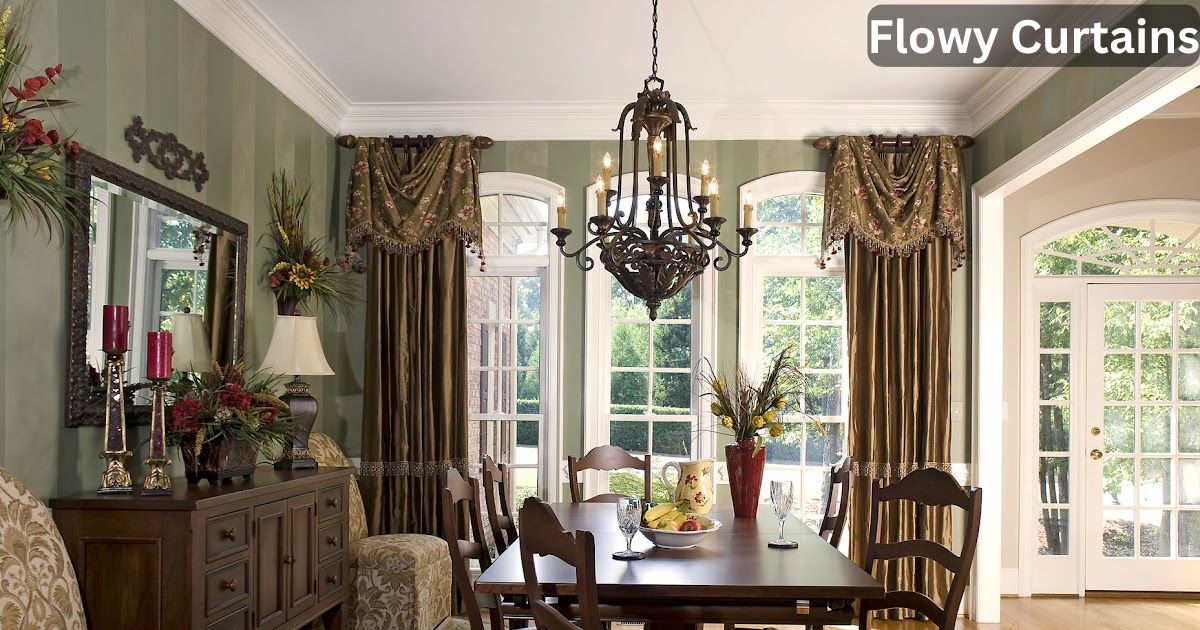
Soft, flowing curtains add a touch of elegance and softness to the clean lines typical of Japandi interiors.
Curtain tips:
- Opt for natural fabrics like linen or cotton
- Choose colors that blend with your walls for a seamless look
- Hang curtains from ceiling to floor to create a sense of height
Light, airy curtains can also help diffuse natural light, creating a soft glow in your dining room.
11. Built-in Wall Shelving
Integrated storage solutions, such as built-in wall shelving, epitomize the functional aspect of Scandinavian design while providing display space for carefully curated items.
Benefits of built-in shelving:
- Maximizes space efficiency
- Creates a clean, uncluttered look
- Offers opportunities to display art pieces, books, or ceramics
Consider open shelving to maintain an airy feel, or mix open and closed storage for versatility.
12. Organic Shapes
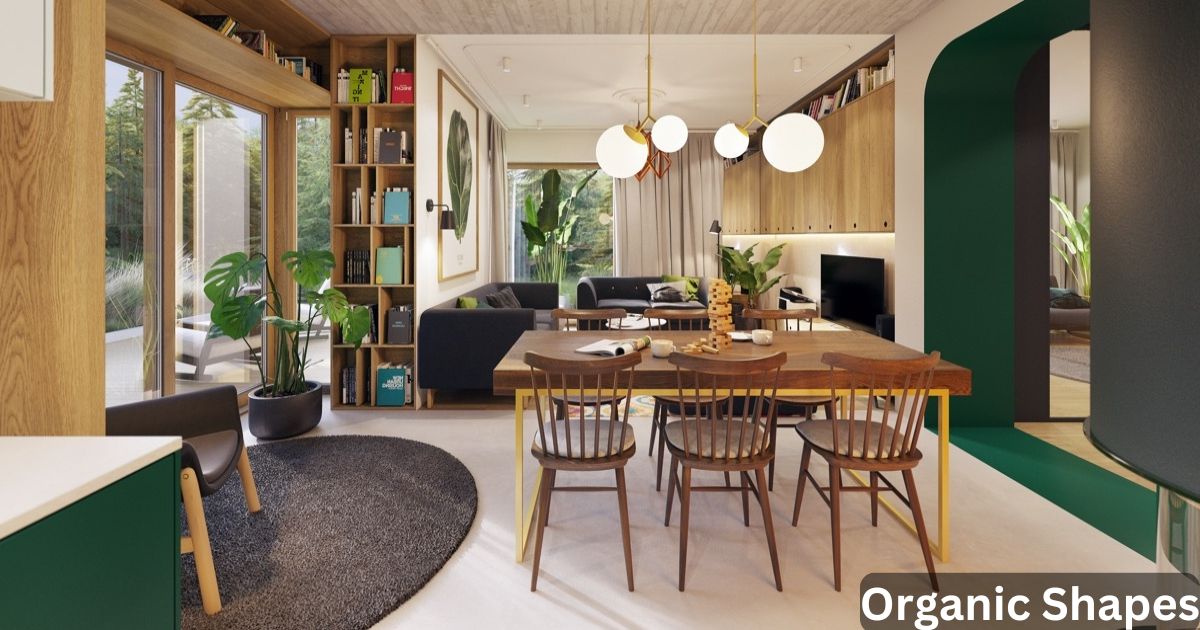
Incorporating organic shapes through furniture, decor, or even architectural elements adds a softer, more natural feel to Japandi dining rooms.
Ways to introduce organic shapes:
- Choose a dining table with rounded corners or an oval shape
- Add a curved sideboard or console table
- Use mirrors or wall art with irregular or flowing forms
- Select rugs with abstract, nature-inspired patterns
These softer forms provide a beautiful contrast to the straight lines often found in Japandi furniture, creating a more balanced and harmonious space.
Bringing It All Together
Creating a Japandi dining room is about finding the right balance between minimalism and warmth, functionality and beauty. Here are some final tips to help you achieve this look:
- Quality over quantity: Invest in fewer, high-quality pieces rather than filling the space with many items.
- Mix textures: Combine smooth surfaces with rougher textures to add depth and interest.
- Embrace negative space: Don’t feel the need to fill every corner. Empty space is an important element of Japandi design.
- Focus on natural light: Maximize natural light where possible, using window treatments that can be fully opened.
- Add personal touches: While maintaining minimalism, include a few personal items that bring joy and reflect your personality.
Remember, the goal of a Japandi dining room is to create a peaceful, inviting space that encourages connection and mindful living. By incorporating these elements and trends, you can transform your dining area into a serene retreat that balances aesthetics with functionality, perfect for modern living.

